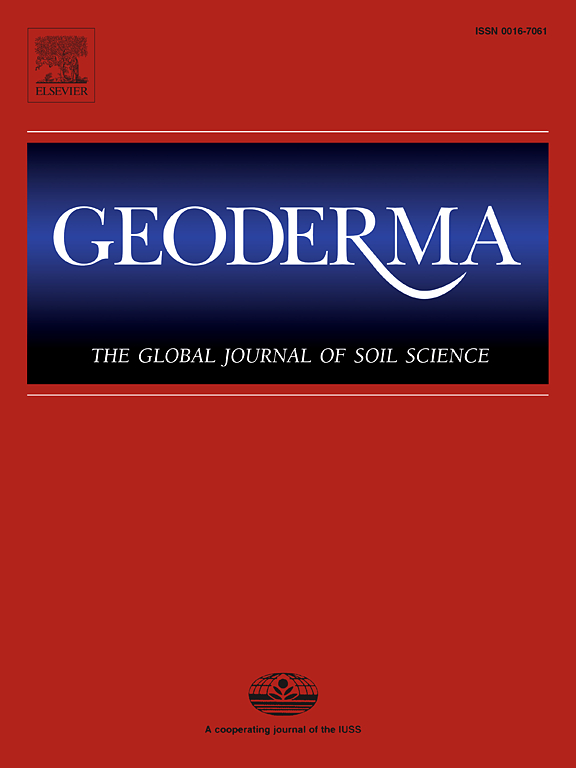覆盖作物改变土壤理化性质:一项全球荟萃分析
IF 6.6
1区 农林科学
Q1 SOIL SCIENCE
引用次数: 0
摘要
覆盖作物因其增强土壤健康的潜力而被广泛认识,但其在不同条件下对土壤理化性质的影响仍知之甚少。我们对225项研究进行了全球荟萃分析,以量化覆盖作物对15个关键土壤特性的影响。在所有研究中,覆盖作物显著降低了3.2%的土壤容重和11.8%的抗渗透能力。水稳性团聚体增加15.9%,总孔隙率增加6.1%,水入渗率增加37.2%。土壤透气性、饱和导电性、土壤pH、电导率和阳离子交换量均无显著变化。覆盖作物的效果受气候因素、管理措施和土壤质地的影响。其中,年平均气温与土壤容重的减少和土壤含水量的增加呈正相关,年平均降水量与入渗和团聚体稳定性的变化呈正相关。管理措施,如覆盖作物类型、残茬放置和保护性耕作,进一步提高了结果,混合和禾科覆盖作物的改善最大。此外,土壤质地和初始土壤pH值也影响这些效应,其中细、中质地土壤表现出显著的效益。土壤参数之间的关系揭示了孔隙度、入渗和团聚体稳定性的协同改善,强调了覆盖作物对土壤结构的多种益处。这些发现强调了覆盖作物在改善土壤物理特性和水动力学方面的巨大潜力,使其成为气候变化背景下可持续农业的重要组成部分。本文章由计算机程序翻译,如有差异,请以英文原文为准。

Cover crops alter soil physicochemical properties: A global meta-analysis
Cover crops are widely recognized for their potential to enhance soil health, but their effects on soil physicochemical properties under diverse conditions remain poorly understood. We conducted a global meta-analysis of 225 studies to quantify the impacts of cover crops on 15 key soil properties. Across all studies, cover crops significantly reduced soil bulk density by 3.2 % and penetration resistance by 11.8 %. They also increased water stable aggregates by 15.9 %, total porosity by 6.1 %, and water infiltration by 37.2 %. No significant changes were observed for soil air permeability, saturated hydraulic conductivity, soil pH, electrical conductivity, and cation exchange capacity. The effects of cover crops were influenced by climatic factors, management practices, and soil texture. Specifically, the mean annual temperature was positively correlated with reductions in bulk density and increases in soil water content, while mean annual precipitation correlated positively with changes in water infiltration and aggregate stability. Management practices, such as cover crop type, residue placement, and conservation tillage, further enhanced outcomes, with mixed and Poaceae cover crops showing the greatest improvements. Additionally, soil texture and initial soil pH influenced these effects, with fine- and medium-textured soils showing notable benefits. Relationships among soil parameters revealed synergistic improvements in porosity, infiltration, and aggregate stability, emphasizing the diverse benefits of cover crops to soil structure. These findings emphasize the significant potential of cover crops to enhance soil physical properties and water dynamics, establishing them as an essential component of sustainable agriculture in the context of climate change.
求助全文
通过发布文献求助,成功后即可免费获取论文全文。
去求助
来源期刊

Geoderma
农林科学-土壤科学
CiteScore
11.80
自引率
6.60%
发文量
597
审稿时长
58 days
期刊介绍:
Geoderma - the global journal of soil science - welcomes authors, readers and soil research from all parts of the world, encourages worldwide soil studies, and embraces all aspects of soil science and its associated pedagogy. The journal particularly welcomes interdisciplinary work focusing on dynamic soil processes and functions across space and time.
 求助内容:
求助内容: 应助结果提醒方式:
应助结果提醒方式:


